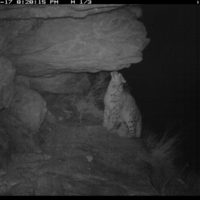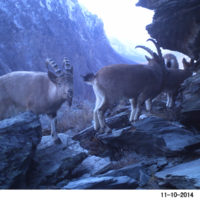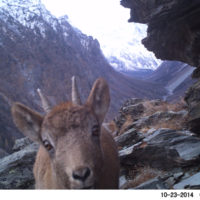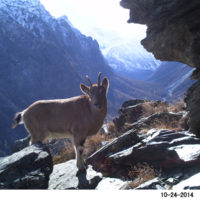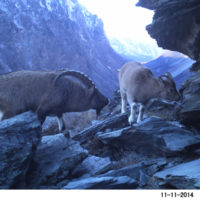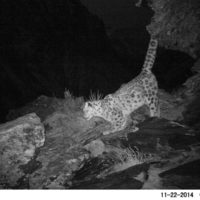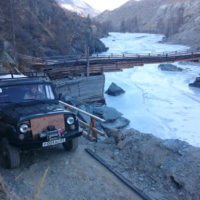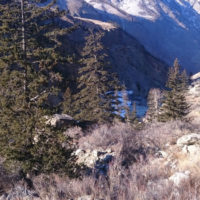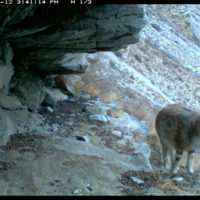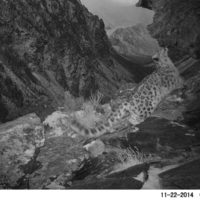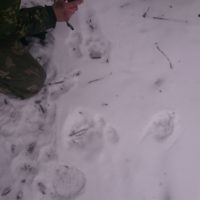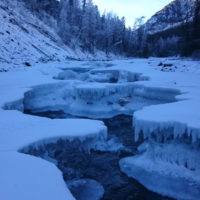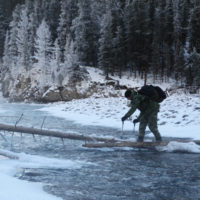2015 Field report and photos
Tracking and studying the snow leopard is a physically grueling task, especially in -40˚C/F temperatures over rocky and treacherous mountain terrain. But just a few weeks ago, the snow leopard team returned from a field expedition with new snow leopard evidence, incredible photos, and the successful removal of poacher’s snares.
“We were in three [watersheds]: Iedygem, Kulagash, and Karagem. Near Iedygem, we removed 24 wire snares. They had been set by two men from Dzhazator who had arrived two days prior to us. We found the snares by following their tracks and as the snares hadn’t stood long, there were no victims. We set out on our expedition just in time! After our arrival, these people decamped from the hut the same night. We didn’t see them again and didn’t see snares in any other places.”
The team continued on to our deployed camera traps to retrieve several months of photograph data.
“The Karagem camera trap spent the whole summer face down: a week after I reset it, a bear came by and tore if off its mount, knocked it about and dropped it! We reset it in November. In December, a snow leopard visited it a week prior to our visit. Judging by the size of the pug marks, it’s a male. The images are out of focus and only of his hind end. This is the same snow leopard that we observed last year (not Kryuk or Vita).”
They also discovered new snow leopard tracks:
“In Karagem, we found pug marks from two different snow leopards in two locations: on Chibit pass and in the middle Karagem River. The pug marks in Karagem and Kara-Ayry are identical, but traveling in different directions, and the distance between the two locations is significant!”
A much larger team will return in February [2016] and hope to capturing images of last year’s snow leopard cubs and their mother, Vita.
(These images are all the property of the The Altai Project. Please contact us for permission to use them.)

